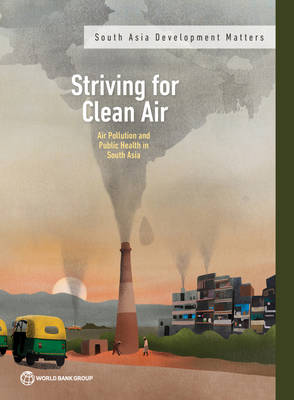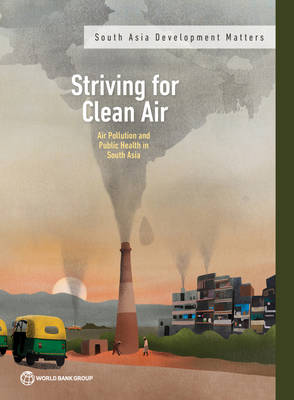
- Afhalen na 1 uur in een winkel met voorraad
- Gratis thuislevering in België vanaf € 30
- Ruim aanbod met 7 miljoen producten
- Afhalen na 1 uur in een winkel met voorraad
- Gratis thuislevering in België vanaf € 30
- Ruim aanbod met 7 miljoen producten
Zoeken
€ 73,45
+ 146 punten
Omschrijving
South Asia is home to 9 of the world's 10 cities with the worst air pollution. Concentrations of fine particulate matter (PM2.5) in some of the region's most densely populated and poor areas are up to 20 times higher than what the World Health Organization considers healthy (5 micrograms per cubic meter). This pollution causes an estimated 2 million premature deaths in the region each year and results in significant economic costs. Controlling air pollution is difficult without a better understanding of the activities that cause emissions of particulate matter. Air pollution travels long distances in South Asia and gets trapped in large 'airsheds' that are shaped by climatology and geography. 'Striving for Clean Air' identifies six major airsheds in the region and analyzes four scenarios for reducing air pollution with varying degrees of policy implementation and cooperation among countries. The analysis shows that cooperation between different jurisdictions within an airshed is crucial, and a schematic road map with three phases is proposed. The phases in the road map may overlap when the rate of progress differs, depending on local circumstances. Phase 1 would improve monitoring and institutions; Phase 2 would introduce additional and joint targets for cost-effective abatement; and Phase 3 would mainstream air quality in the economy.
Specificaties
Betrokkenen
- Auteur(s):
- Uitgeverij:
Inhoud
- Aantal bladzijden:
- 114
- Taal:
- Engels
- Reeks:
Eigenschappen
- Productcode (EAN):
- 9781464818318
- Verschijningsdatum:
- 22/06/2023
- Uitvoering:
- Paperback
- Formaat:
- Trade paperback (VS)
- Afmetingen:
- 203 mm x 276 mm
- Gewicht:
- 358 g

Alleen bij Standaard Boekhandel
+ 146 punten op je klantenkaart van Standaard Boekhandel
Beoordelingen
We publiceren alleen reviews die voldoen aan de voorwaarden voor reviews. Bekijk onze voorwaarden voor reviews.








